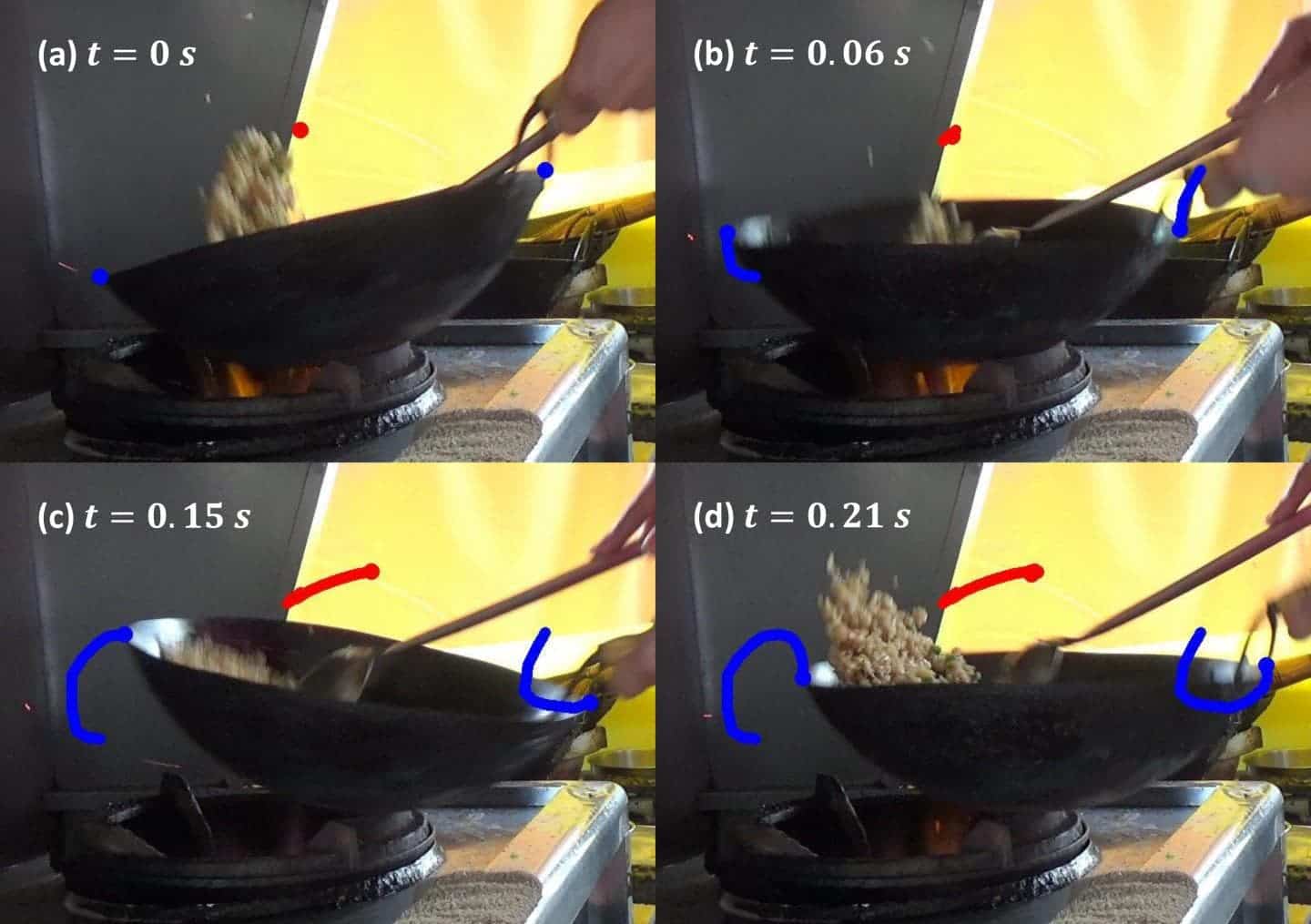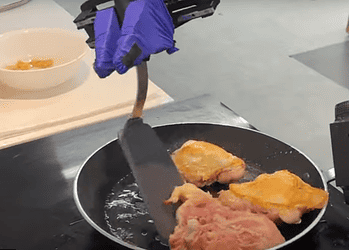Things get hot and spicy in this new study.
Fried rice being cooked in a wok during a five-second interval, recorded in real time. The blue loops show the trajectory of the front and back of the wok during each cycle; the red line shows the path of the wok’s center of mass. Image credits: Ko and Hu.
Too often, in its quest for understanding the amazing universe around us, science forgets to look back and analyze things a bit closer to home — like food. Cooking is an essential part of what allowed mankind to grow and develop as a species, but some of the intricacies surrounding cooking are not well understood. Simply put, we’re quite good at it, but it’s not really clear why we do some of the things we do.
Take stir-frying, for instance. It’s a staple in Chinese cuisine, and very popular in many parts of the world. Wok cooking — the way stir-frying is done traditionally — involves a tossing movement, which is done every few seconds. However, the physics behind this process have not been studied.
In order to rectify this, David Hu, a fluid mechanics professor at the Georgia Institute of Technology and his doctoral student Hungtang Ko set out to isolate the specific elements of this technique and find out what makes it so important.

They started out, as expected, by studying the pros: they videotaped experienced chefs as they made fried rice at two stir-fry restaurants in Taiwan. They then returned to the lab to break down these recordings. The entire cooking process lasted around two minutes and featured continuously repeating cycles lasting about a third of a second each. Looking at the video, the entire movement seems quite natural, but trying to break down the process into its constituent parts was not that easy.
Researchers broke it down into four distinct phases, which compose of two oscillating motions:
a front-back movement in which the wok is moved toward and away from the chef;
a “seesaw” motions, in which the wok is tilted backwards and forward.
These movements are done with the same speed but are slightly out of phase.
The purpose of these movements is actually not make sure the rice doesn’t burn — although the wok can get very hot (up to 1,200 Celsius), the chef ensures that the hot rice is constantly flung up into the air, where it cools down, until it is perfectly browned and not burnt.
It’s remarkable how well the cooking process can fit into a mathematical model — but researchers took it further. Thinking what they could do with this information, they came to the only reasonable explanation: a robot wok chef.
“Once we came up with a mathematical model for fried rice cooking,” Ko said, “we realized it could lend itself rather easily to a robotic design.” Previous attempts at stir-fry robots succeeded in mixing the ingredients by shaking or rotation, added Hu, “but none were able to throw the rice, which meant they couldn’t cook at the high temperatures needed to produce nicely carbonized grains.”
Developing a wok robot could be quite useful since this type of cooking is a tiring and strenuous activity, often pushing kitchen staff to the limit.






